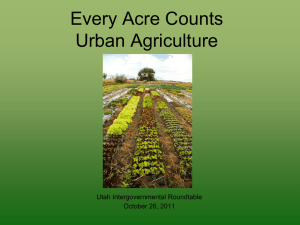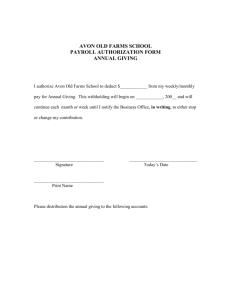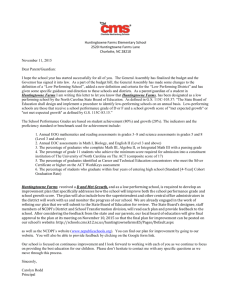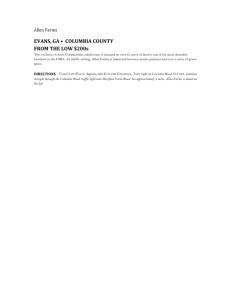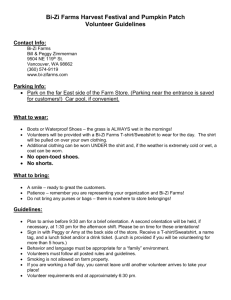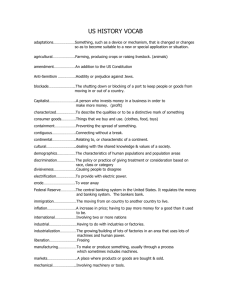Blowing in a New Direction
advertisement
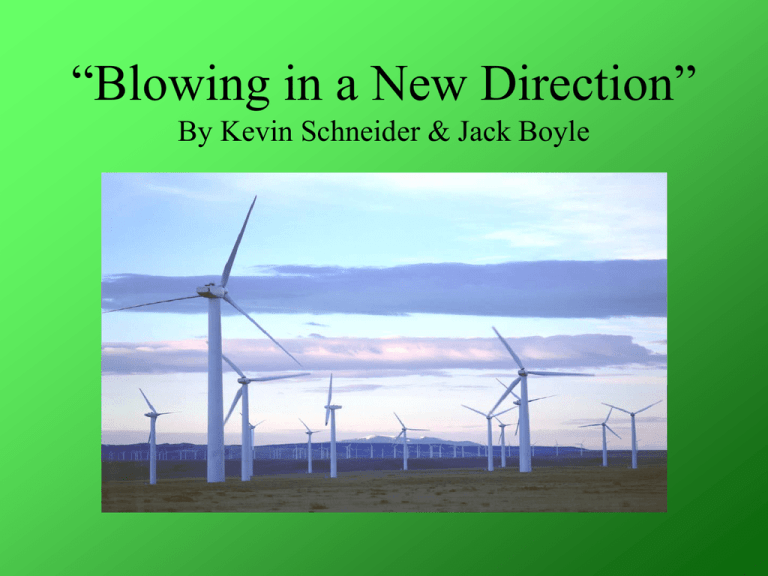
“Blowing in a New Direction” By Kevin Schneider & Jack Boyle What We Use Now • Most Buildings and entire cities are powered by oil, gas, or coal. Air Pollution • Oil, gas, and coal powered factories. Dependency on Oil/Gas/Coal • Demand for oil/gas/coal is high. • Supply for oil/gas/coal is low. • Prices for oil/gas/coal are skyrocketing. Energy Solution • Alternative energy sources • There are many energy sources besides gas, coal, and oil. Wind Farms • A wind turbine is a rotating machine that converts the kinetic energy in wind into mechanical energy. Wind Farms • If the mechanical energy is used directly by machinery, such as a pump or grinding stones, the machine is usually called a windmill. Winds Farms • If the mechanical energy is then converted to electricity, the machine is called a wind generator, wind turbine, wind power unit (WPU) or wind energy converter (WEC). Where should they go? • In order for a wind turbine to work efficiently, wind speeds usually must be above 12 to 14 miles per hour. A New City Trend • Altamont Pass, east of San Francisco San Gorgonio Pass, near Palm Springs Tehachapi, south of Bakersfield • These wind farms can power San Francisco. Long Distance Relationship • Once electricity is made by the turbine, the electricity from the entire wind farm is collected together and sent through a transformer. There the voltage is increased to send it long distances over high power lines. “Show Me” Wind Farms • Following the opening of a new 5 mile long fourturbine wind farm, Rock Port, a town of 1,395 in North West Missouri, has become the first U.S. town to get all its electricity from wind power. Flaws of Wind Power • Big and bulky so cannot be in certain places. • Devastating effect of bird population How They Work • • • • Wind Turns Blades Spins shaft Connects to generator Creates electricity Why Wind Farms Should Be Used •Clean •Renewable •Reliable •Affordable Cleanliness • Wind Turbines use simply the air in the environment to produce energy, not fossil fuels. • This means it does not release toxins into the air or leave behind waste. • Fossil fuel energy releases such as coal power CO2, causes smog, acid rain, soot, and contributes to the climate crisis. Renewable • Unlike fossil fuels and other energy sources, wind farms do not use up natural resources. • Wind turbines can always be rebuilt or repaired without harming the environment. • Wind farms can be added to anywhere with wind without depleting the land. Reliability • Wind farms can be built easily • Wind farms can produce large amounts of power in strategically placed areas with high wind amounts. • New technology allows wind farms to produce energy even without large amounts of wind. Affordability • Wind farms’ progress and growth are now allowing them to compete at a reasonable price with nuclear and coal power. • Wind power is far less expensive than middle east oil. • Wind farms produces energy on a constant and free resource, the air. • Scientists are STILL developing ways to make it less costly and more efficient. Looking Ahead • Alternative energy is the way of the future, greatly wind energy. • Gasoline usage is projected to be gone within the next 100 years. • With the continuing threat of global warming, old ways of producing energy have changed. In Conclusion • Wind farms help to contribute to the to get away from dependence on foreign countries. In Conclusion Lastly, It is our responsibility to protect our planet.
